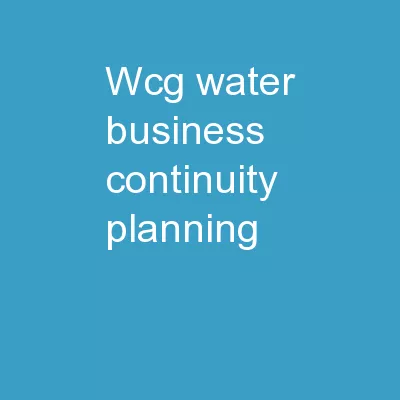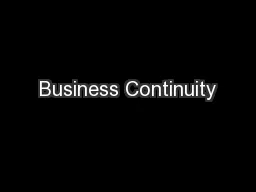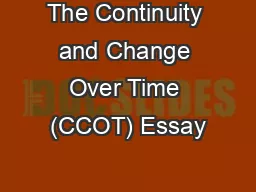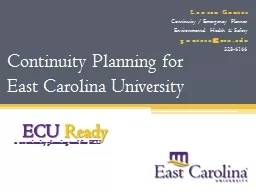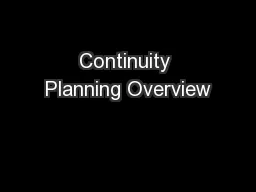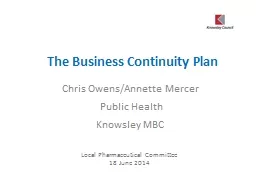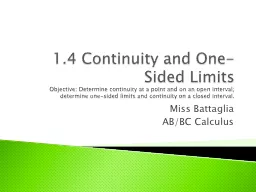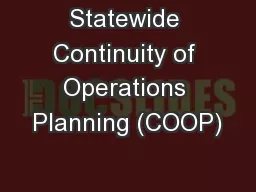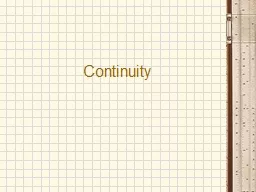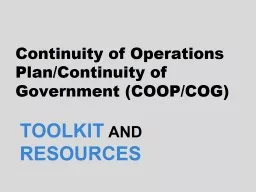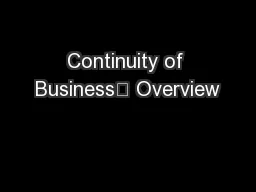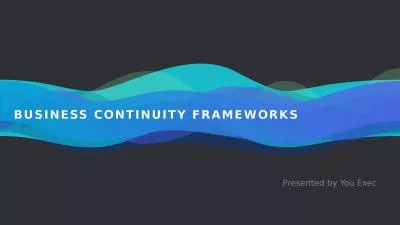PPT-WCG WATER BUSINESS CONTINUITY PLANNING
Author : cheryl-pisano | Published Date : 2018-11-08
Progress report 27 September 2017 Gavin Kode Western Cape Government WCG Water Business Continuity Planning BCP Progress report Water BCP General Context of Water
Presentation Embed Code
Download Presentation
Download Presentation The PPT/PDF document "WCG WATER BUSINESS CONTINUITY PLANNING" is the property of its rightful owner. Permission is granted to download and print the materials on this website for personal, non-commercial use only, and to display it on your personal computer provided you do not modify the materials and that you retain all copyright notices contained in the materials. By downloading content from our website, you accept the terms of this agreement.
WCG WATER BUSINESS CONTINUITY PLANNING: Transcript
Download Rules Of Document
"WCG WATER BUSINESS CONTINUITY PLANNING"The content belongs to its owner. You may download and print it for personal use, without modification, and keep all copyright notices. By downloading, you agree to these terms.
Related Documents

